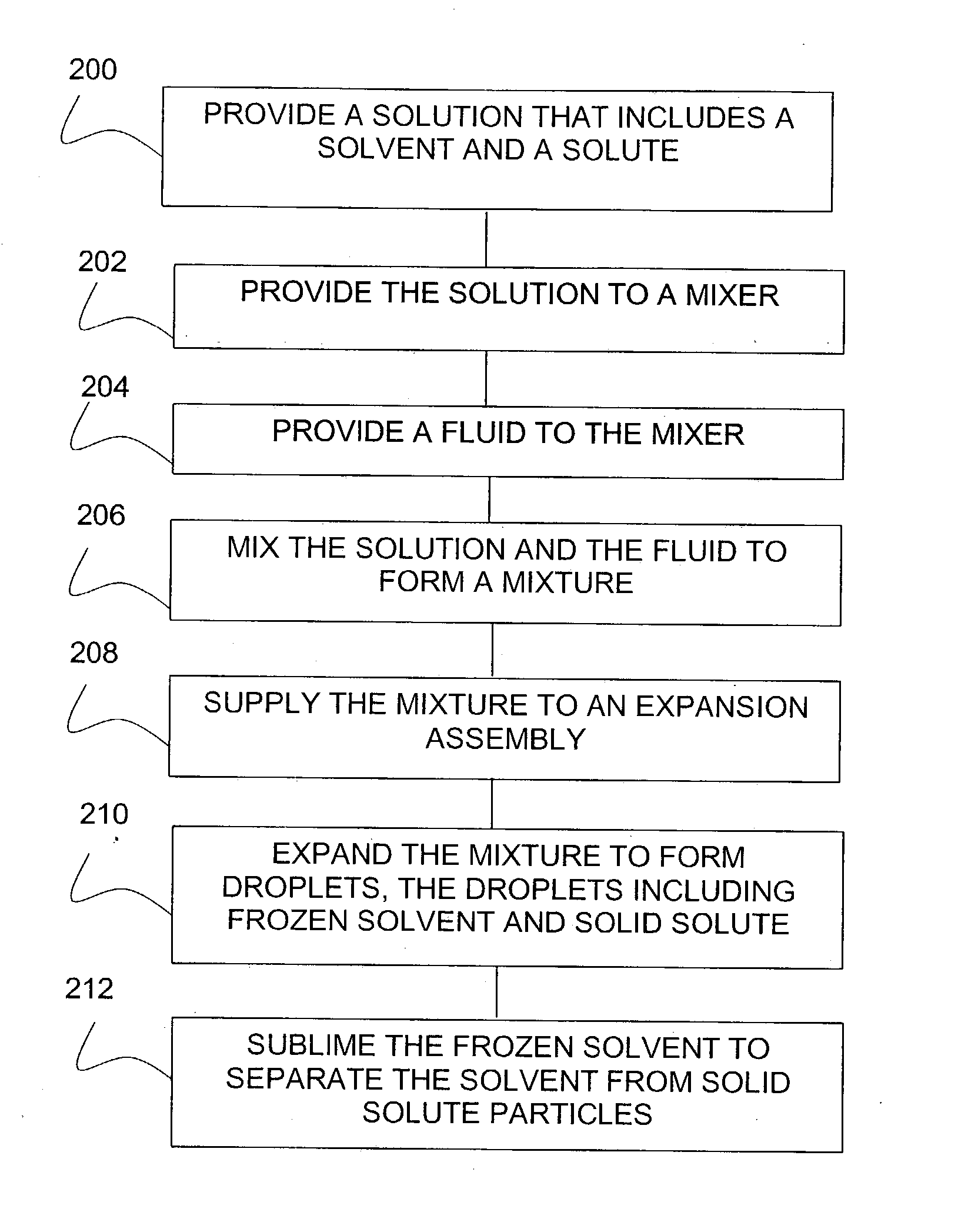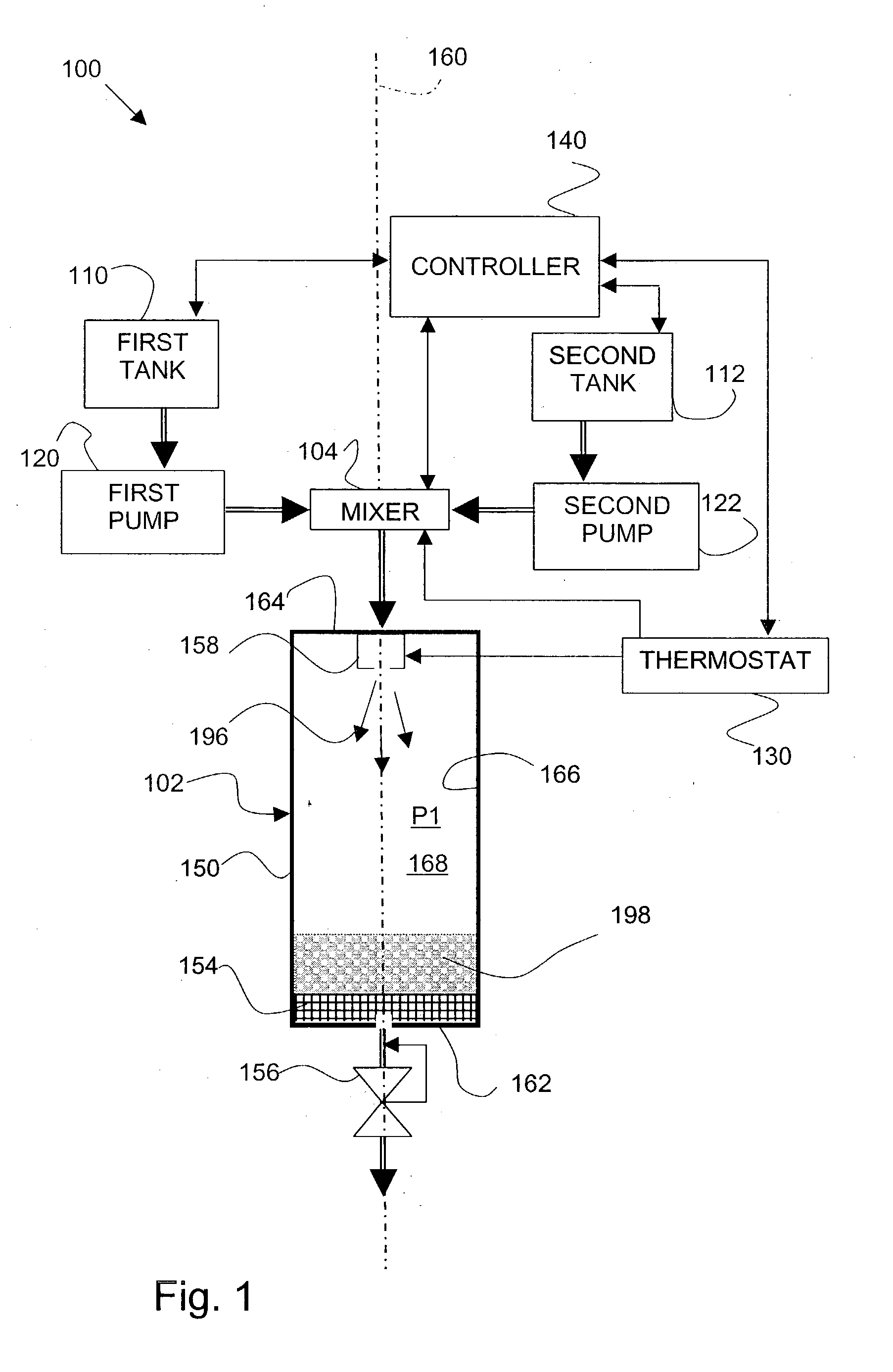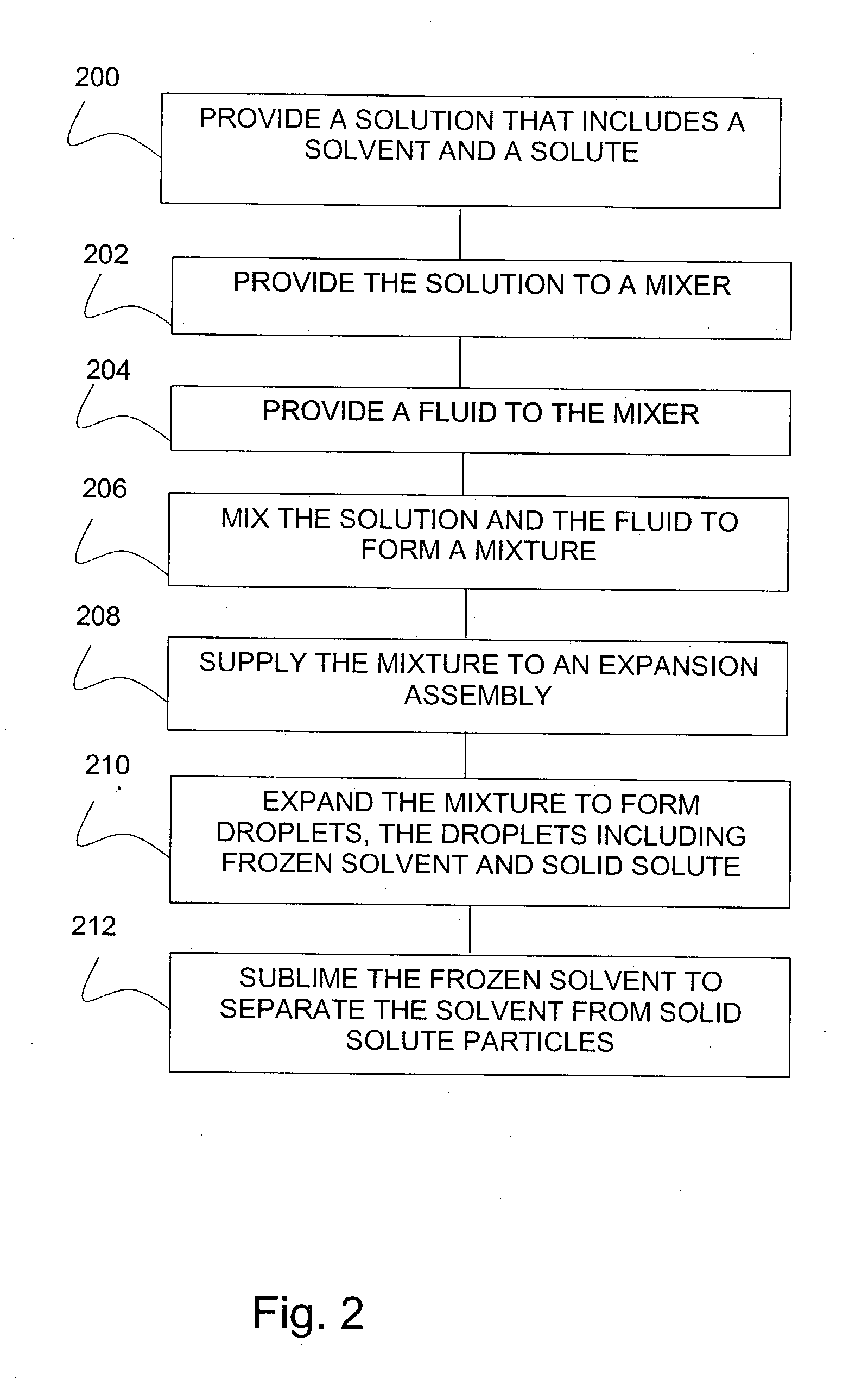Lyophilization method and apparatus for producing particles
a technology of lyophilization and particle size, applied in the direction of lighting and heating apparatus, separation processes, domestic cooling apparatus, etc., can solve the problems of reducing or eliminating biological activity, reducing or destroying some proteins and peptides, and not directly producing particles in the narrow micro- or nano-meter size rang
- Summary
- Abstract
- Description
- Claims
- Application Information
AI Technical Summary
Problems solved by technology
Method used
Image
Examples
example 1
[0061] Preparation of Lactose Solution.
[0062] In an apparatus as shown in FIG. 3, 0.6 grams (g) of lactose was dissolved into 10 milliliters (ml) of purified water to form SOLUTION 1(a). SOLUTION 1(a) was charged to a solution tank and equilibrated for 20 minutes. The solution tank was pressurized with carbon dioxide gas to an operating pressure of 30 MegaPascal (MPa), and heated to a temperature of 20.degree. Celsius (293 Kelvin (K)).
[0063] A FREEZONE, 4.5 Liter Model 77510 freeze-dry system, which is commercially available from Labconco Corporation (Kansas City, Mo.), was connected to an expansion assembly. Liquid carbon dioxide was charged to a fluid tank. The 10 ml of SOLUTION 1(a) from the solution tank was metered into a mixer, and about 10 ml of liquid carbon dioxide was also metered into the mixer. The mixer was operated at an agitation speed of about 4000 revolutions per minute (RPM). SOLUTION 1(a) and the liquid carbon dioxide were mixed in the mixer to form a liquid carbo...
example 2
[0069] Preparation of Lactose Solution.
[0070] The materials and processing conditions were the same as in EXAMPLE 1, except that the lactose solution was expanded with a larger volume of liquid carbon dioxide, about 50 ml.
[0071] Expansion and Freeze-Drying of Lactose Particles.
[0072] The expansion and subsequent processing of the lactose particles was the same as in EXAMPLE 1.
[0073] Analysis of Lactose Particles.
[0074] Analysis of the lactose particles was performed using a Scanning Electron Microscope (SEM) to determine size and morphology. The dry product consisted of fine lactose particles having a mean particle diameter below 1 .mu.m as shown in FIG. 6.
example 3
[0075] Preparation of Lactose / Insulin Solution.
[0076] The materials and processing conditions were the same as in EXAMPLE 1, except that 1 gram of lactose and 0.2 grams of insulin were dissolved in 10 ml of purified water to form a lactose / insulin.
[0077] Expansion and Freeze-Drying of Lactose / Insulin Particles.
[0078] The expansion and subsequent processing of the lactose / insulin particles was the same as in EXAMPLE 1.
[0079] Analysis of the Lactose / Insulin Particles.
[0080] Analysis of the lactose / insulin particles was performed using a Scanning Electron Microscope (SEM) to determine size and morphology. The dry product consisted of fine lactose and insulin particles having a mean particle diameter below 10 .mu.m.
PUM
| Property | Measurement | Unit |
|---|---|---|
| size | aaaaa | aaaaa |
| density | aaaaa | aaaaa |
| temperatures | aaaaa | aaaaa |
Abstract
Description
Claims
Application Information
 Login to View More
Login to View More - R&D
- Intellectual Property
- Life Sciences
- Materials
- Tech Scout
- Unparalleled Data Quality
- Higher Quality Content
- 60% Fewer Hallucinations
Browse by: Latest US Patents, China's latest patents, Technical Efficacy Thesaurus, Application Domain, Technology Topic, Popular Technical Reports.
© 2025 PatSnap. All rights reserved.Legal|Privacy policy|Modern Slavery Act Transparency Statement|Sitemap|About US| Contact US: help@patsnap.com



